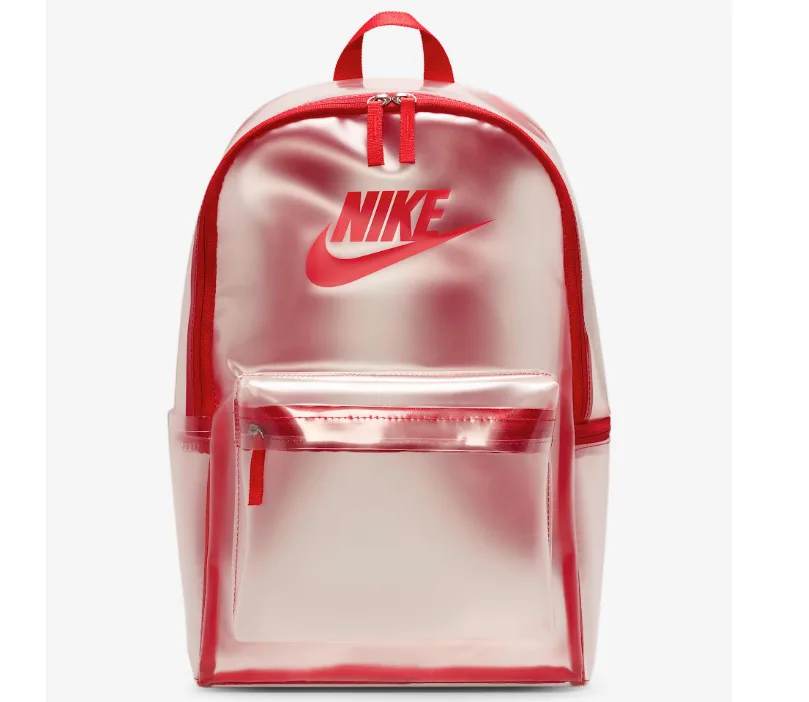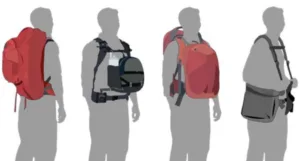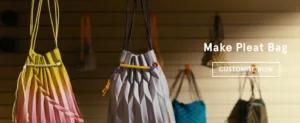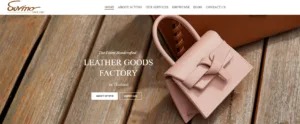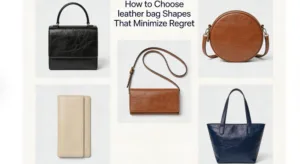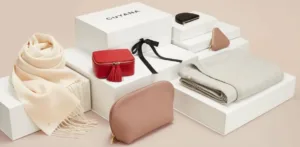Over the past few years, the demand for custom transparent backpacks has seen a notable surge, driven by growing security protocols in schools, stadiums, airports, and event venues. As more institutions implement clear bag policies for safety and visibility, transparent bags have transitioned from niche utility items to mainstream retail products.
Among the standout examples, the Nike Clear Backpack has emerged as a benchmark in this category—combining practicality with a sleek, branded aesthetic that resonates with both consumers and retailers. Its success illustrates how clear bags are no longer just functional, but also part of lifestyle and fashion narratives.
For B2B buyers, private label brands, and OEM manufacturers, this trend signals a strategic opportunity. By analyzing how top-tier brands like Nike have capitalized on the clear bag retail growth, businesses can better understand how to position their own product lines, tap into emerging demand, and deliver compliant, stylish, and customizable solutions to a rapidly growing market.
Contents
1. Market Trend Overview: The Expanding Demand for Transparent Bags

The global see-through bag market has experienced sustained growth, with transparent backpacks becoming a standout subcategory. According to recent retail data, online searches and sales for clear backpacks have increased steadily, especially in North America and parts of Europe, where institutional policies continue to mandate stadium-approved or event-compliant bags. Brick-and-mortar retailers are also expanding shelf space for these items as schools, sports venues, and airports implement stricter entry regulations.
This trend is not purely functional—consumers are increasingly drawn to the aesthetics of transparency. The clear design offers a blend of security, personal expression, and minimalist fashion. Gen Z, in particular, appreciates the ability to showcase curated internal items like tech accessories, notebooks, or branded essentials, making transparency a form of soft personalization.
The category is also diversifying beyond traditional use cases. What started as a compliance-driven item for school backpacks has evolved into a broader market that includes athleisure, custom travel bags, festival gear, and luxury backpack brand collaborations. Designers are integrating clear elements into mixed-material constructions, from PVC and custom TPU bag panels to full transparent shells enhanced with colored trims, logo embossing, or modular components.
For manufacturers and brand owners, this signals an opportunity to innovate within a growing product segment. Understanding the evolving clear backpack trend for 2025 and anticipating consumer expectations for both compliance and style is essential to capturing market share.
2. Case Study: Key Elements Behind the Success of the Nike Clear Backpack
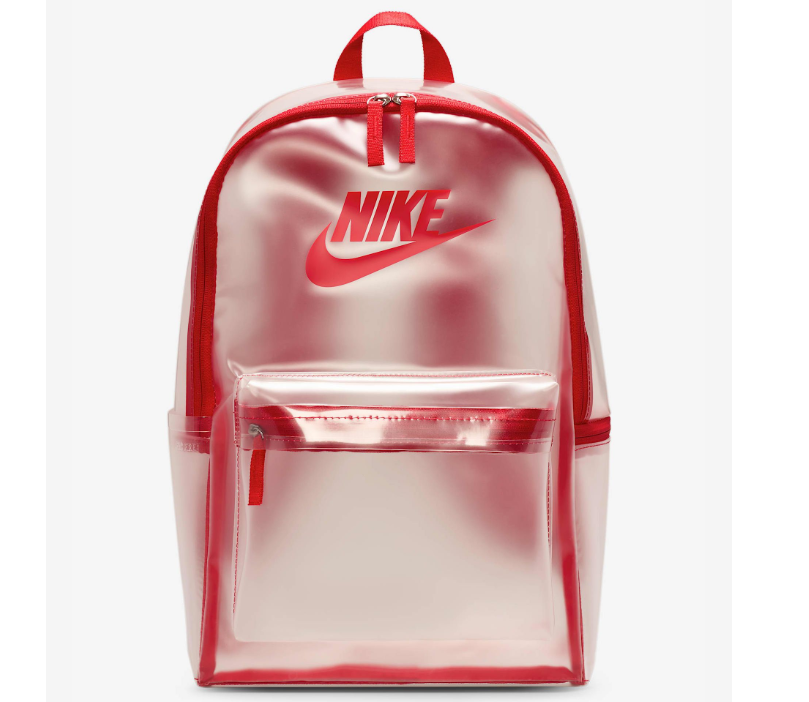
Building on the rising momentum of transparent bags in retail, the Nike Clear Backpack stands out as a well-executed example that balances compliance, style, and brand identity. Its success is not accidental—it’s the result of thoughtful material selection, smart engineering, and market-aware design.
First, Nike’s use of durable clear bag materials, such as reinforced PVC or lightweight TPU, ensures the bag remains structurally sound even under daily use. These materials are selected not only for clarity and flexibility, but also for resistance to yellowing, tearing, and cracking—crucial for long-term customer satisfaction.
Functionality is also central. The backpack features padded, reinforced shoulder straps, which address a common pain point in clear bag designs: comfort and load-bearing strength. Waterproof zippers and internal compartments enhance usability while maintaining a clean, transparent aesthetic.
Most importantly, the product adheres to stadium policy compliance, aligning with regulations from institutions like the NFL, NCAA, and many public school systems. This allows the bag to serve both as a fashion statement and as an event-ready essential.
From a branding perspective, Nike has skillfully preserved its visual identity. The minimalist layout and centered logo placement deliver a premium transparent backpack design that feels both modern and unmistakably “Nike.”
For B2B players looking to enter or scale in this segment, the question becomes: what core lessons from Nike’s design and material choices can be adapted and optimized for your own OEM or private label transparent bag offerings?
3. What B2B Brands Can Learn: Strategic Insights for Private Label and OEM Success
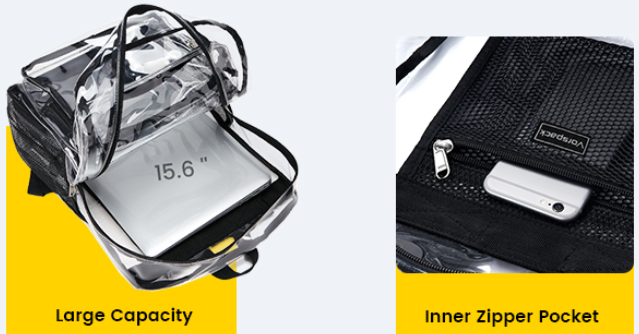
The success of the Nike Clear Backpack underscores a critical opportunity for B2B brands to innovate within the transparent bag category—not by copying, but by adapting the underlying principles to meet specific market needs through OEM and private label development.
From a manufacturing standpoint, material selection should be based on both durability and visual clarity. TPU, while more expensive than standard PVC, offers superior UV resistance and flexibility, making it ideal for long-term use in premium markets. In contrast, budget-friendly PVC remains suitable for bulk clear backpack manufacturers targeting promotional, event, or student segments.
Structurally, brands should focus on weight distribution, reinforced stitching, and compliant dimensions. For example, NFL and NCAA stadium guidelines typically require bags to be no larger than 12″ x 6″ x 12″, and to include only transparent compartments. Ignoring these details risks non-compliance—and lost sales. Smart product development should also consider padded straps, inner pouches, and water-resistant finishes, all of which are value-adding features in this competitive category.
Differentiation in private label transparent bags comes down to thoughtful branding and customization. A 2023 industry report showed that custom-printed clear backpacks generated 32% higher engagement on social media compared to non-branded counterparts, especially among Gen Z consumers. Elements like colored trim, printed slogans, interchangeable inserts, or removable pouches offer ways to elevate a basic clear bag into a unique retail product.
From a logistics and sourcing perspective, low minimum order quantities (MOQs) and rapid prototyping are crucial for brand agility. Startups and smaller retailers often require MOQ ranges under 300 units, and sampling turnaround within 10–15 days. Suppliers that can offer flexible production, OEM stadium-approved bags, and fast design iteration will be better positioned to win contracts across both direct-to-consumer and wholesale channels.
Case in point: A U.S.-based school supply brand launched a compliant, padded clear backpack with their logo and school spirit colors in 2024. By working with an OEM partner offering 200-unit MOQ and 2-week prototyping, they sold over 15,000 units through Amazon and regional school districts within 6 months—despite being a first-time entrant in the category.
4. Actionable Recommendations for Buyers & Distributors

For distributors, sourcing managers, and brand owners looking to enter or scale in the transparent backpack segment, success depends on more than just aesthetics. Strategic alignment with both market demand and production capabilities is key. Here are several actionable steps to guide your decision-making process:
Partner with Verified, Standards-Compliant Manufacturers
Ensure your supplier offers ISO-certified production processes and meets relevant export safety standards. This is especially important when producing OEM stadium-approved bags, as non-compliant dimensions or materials can result in legal issues or retail rejections.
Test for Real-World Durability
Before scaling orders, request UV-resistant flap durability testing, zipper strength validation, and strap load testing. Transparent materials are visually appealing, but without durability validation, they risk early returns and negative reviews—especially under school and travel use cases.
Prioritize Flexible Prototyping Services
Opt for suppliers offering custom flap bag prototyping services with digital renderings, material swatches, and fast sample delivery. Agile development cycles allow you to iterate quickly and respond to seasonal trends or regional compliance requirements.
Stock for Multiple Channels and Segments
Clear backpacks aren’t just for stadiums or students. Consider product variants for corporate gifting, festival merchandise, or athleisure sub-lines. Develop SKUs that range from entry-level event giveaways to premium private label transparent bags with upgraded features and custom branding.
Scale Smart with Tiered MOQs
Seek partners that offer tiered bulk clear backpack production options—starting with 200–300 units for small campaigns, scaling to 5,000+ for national retail launches. This ensures risk-managed scaling, especially when testing new product concepts.
In a competitive yet still-evolving category like transparent backpacks, B2B success hinges on combining market insight, technical compliance, and production agility. Brands that can offer utility, style, and speed to market will be best positioned to capitalize on the ongoing clear bag trend.
Conclusion
The transparent backpack trend shows no signs of slowing down. With growing security regulations, evolving consumer tastes, and rising demand across educational, recreational, and retail spaces, clear bags are no longer a niche product—they’re a mainstream must-have.
The Nike Clear Backpack supplier sets a strong precedent, but the real opportunity lies in how B2B brands interpret and evolve this trend through smarter design, faster development, and strategic manufacturing. Whether you’re looking to launch a new private label transparent bag line, meet compliance requirements with OEM stadium-approved bags, or offer added value with custom prototyping services, the market is ripe for innovation.
By partnering with a reliable, ISO-certified flap bag production provider that understands both fashion and functionality, your brand can deliver not just clarity in product—but clarity in value.
Ready to prototype your next clear bag bestseller?
Get in touch today to explore our bulk clear backpack production options and start customizing with confidence.

